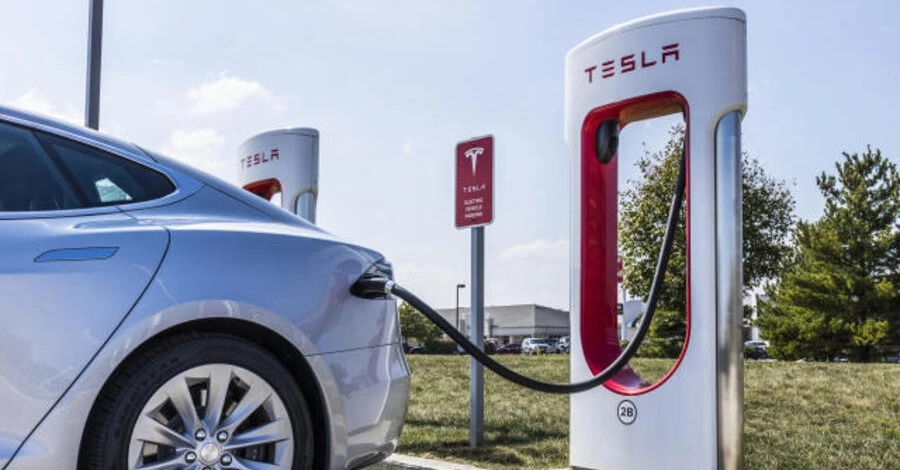“I hope we never switch to NACS in Europe,” states Marek Gutt-Mostowy, CEO & Founder at Willbert, during the “Trends of the leading European eMobility companies” event, organized by Mobility Portal Europe.

Currently, various types of connectors coexist in the electric vehicle (EV) charging sector, leading to efforts over several years to select a universal system.
Regarding this matter, the European Commission took action in 2013 by endorsing Type 2 (Mennekes) to serve as the European Union standard for all EVs and charging stations by the year 2025.
This decision aims to ensure interoperability among different vehicles and types of “refueling” points.
However, what will happen now with the arrival of the North American Charging Standard (NACS) developed by Tesla?
According to information provided by the company, superchargers account for three out of every four fast devices and have set the standard for EV charging in the United States (US) and Canada.
This one is already being adopted by major automakers, as well as by charging point manufacturers and operators.
European companies such as Volkswagen, Audi, Porsche, Volvo, and Mercedes-Benz have already announced their plans to integrate this innovation into their vehicles, primarily for the American and Canadian markets.
The transition to NACS is expected to be complete by 2025.
With this, Elon Musk‘s company aspires to become the standard for EV charging, but could it prevail in Europe?
“I hope not, despite I like the connector as it is the most compact and ergonomic on the market,” details Gutt-Mostowy.
And he emphasizes: “The impact it would have on charging point operators (CPOs), manufacturers, and eventually on drivers would be enormous.”
In this regard, the CEO believes that Europe made a good decision by choosing CCS-2 from the outset.
“Perhaps it’s not the perfect standard, but it was that early choice that made other manufacturers switch to that connector, and we don’t have the very messy situation that currently exists in the US,” he asserts.
What exactly is happening in the Anglo-Saxon country?
CCS-1 seemed to be the frontrunner in the United States.
Furthermore, the federal government has mandated its incorporation into any subsidized station, while also opening the door to include the NACS and any other plug type.
Now, Tesla’s adapter is gaining national support.
A clear example is what is happening in the state of Kentucky, which became the first to require infrastructure providers to implement this system as a condition for receiving funding.
Texas and Washington have also announced plans for the mandatory implementation of Tesla’s system.
However, a group of charging point manufacturers and operators in Texas has signed a letter to the state’s Transportation Commission rejecting this provision as “premature.”
As the Tesla plug becomes dominant, drivers of vehicles designed to use the CCS plug will become increasingly dependent on adapters.
This means that for the time being, a single global standard will not be seen in the market.

Nevertheless, Philippe Vangeel, Secretary General at the European Association for Electromobility (AVERE), mentions to Mobility Portal Europe:
“It is possible for two standards to coexist. I believe that this will be the reality for Europe, with CCS and Megawatt Charging System (MCS) definitely becoming the ones.”
The MCS is a type of charging currently under development and research, yet anticipated to be the definitive solution for electric trucks.
“Eventually the MCS will be the solution for these vehicles,” agrees Marek Gutt-Mostowy.
eMobility acceleration: Europe vs the US
“The US is quite behind Europe in terms of EV charging,” notes Glenn L’Heveder, Head of Business Development and Sales for Europe at AMPECO.
According to estimates from Kelley Blue Book, a Cox Automotive company, approximately 1.2 million electric cars were sold in the Anglo-Saxon country in 2023, accounting for 7.6 per cent of the market share.
Meanwhile, in Europe, according to the European Automobile Manufacturers’ Association (ACEA), over 1.5 million units were registered, reaching 14.6 per cent of the total.
Simultaneously, L’Heveder highlights the “enormous amount” of investments being made by the Joe Biden administration.
One of the most notable measures taken by the government is the Inflation Reduction Act (IRA), which aims to improve the country’s economic competitiveness, innovation, and industrial productivity.
According to the 2024 Sustainable Energy in America Factbook, last year the nation deployed a record figure of over 300 billion dollars in funding for the energy transition for clean energy technologies.

This includes renewable energies, eVehicles, investments in electric grids, and others.
“I believe that what the US is doing is right and that Europe is not doing enough,” indicates the representative of AMPECO.
And he emphasizes: “I think one thing we could do at the European Union level is to try to really increase investments.”
In this context, he highlights that it’s not just about EV charging, but also about sustainable technologies in general.
On the contrary, he points out that the continent has been leading the way in EV charging for years, and the US should look at what they have done.
“Our charging companies are very good at finding the right place to install devices, to have the highest number of transactions,” he asserts.
“This knowledge should be transferred from Europe to America,” he concludes.
Below, the participation of the three speakers during the International Mobility Portal Summit:








